A rare U.S. Model 1895 Krag Rifle……………………(f 520) SOLD
Created on January 13th 2016
A rare U.S. Model 1895 Krag Infantry Service Rifle by The Springfield Armoury.
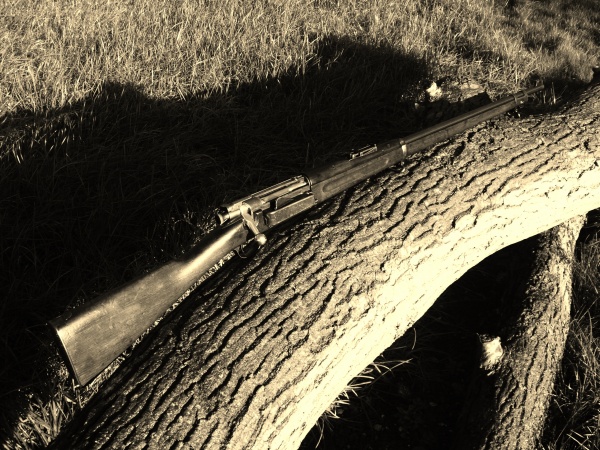
This is one of the “RollsRoyces‘” of the Military Rifle world. These are so easy to shoot, the action is smooth and the recoil fairly soft. The shooter can concentrate on really finding the mark with these elegant rifles. The shape of the .30-40 case helps produce the comfortable recoil. The long infantry barrel in itself also adds accuracy which was lost as rifles soon became more carbine-like but also was designed to let the powder burn longer.
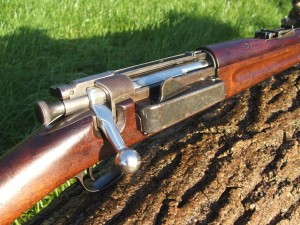
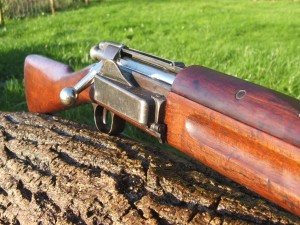
This Krag measures 49.1/4″ in overall length. The round blued barrel measures a full 30″. The trigger pull being 13.1/4″ to center. The Krag is chambered in the new (at the time) U.S. .30 caliber government round which became known as the .30-40 Krag. I have really missed these old girls, whilst the powers that be carried out their accident investigations over the last 18 -24 months. (A re-barreled Norwegian Krag rifle unfortunately gave way on the ranges and there were injuries) Now the Krag in general has been cleared of having any intrinsic problems and we can return to the ranges once again with them. One massive difference being that all the rifles imported by By Sword & Musket visit the Proof House before clients get near them.
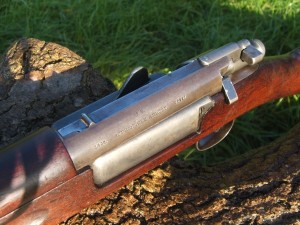
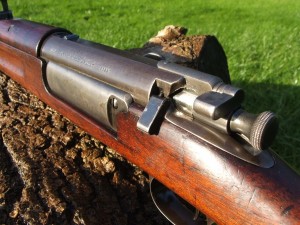
This U.S. version ( far more attractive to the eye – in my opinion ) carries the serial number “25897” on the side of the action. In full it is marked as follows;- “U.S. / 1895. SPRINGFIELD ARMORY 25897” This is marked on one of the best facets of these rifles, where the colours of case-hardening really are shown to their best, on the LHS of the action. The body of the bolt is finished in the white whereas the balance was blued but has now turned to a pleasing plumb-brown. The rear end of the bolt consists of the bolt shroud and safety catch. The handle of the bolt is straight and the extractor is located along the top of the bolt, this used to carry a fiery niter-blue which in this case has, in fact faded. This extractor plays a major part in the removal of the bolt.
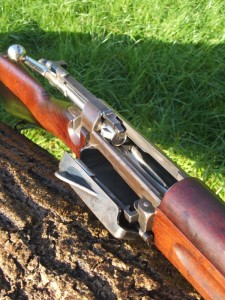
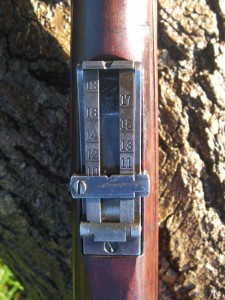
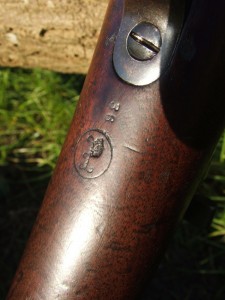
Almost immediately obvious to the eye is the loading gate on the RHS of the action. A large thumb catch protrudes upwards from the loading hatch. This is heavily spring-loaded and with a determined effort can be opened by the thumb of the right hand. Once flipped open, it is held in position as five cartridges are loaded. There is no standard clip loading facility on these rifles. There was time and effort put into solving this problem but no satisfactory solution was decided upon. So rounds are individually loaded from bandoleer to magazine nose or bullet end forward. The spring that made the door so difficult to get open then aids with the closing and the holding closed, of the trap. Thus it does not accidentally come open when in use. The follower then pushes the rounds across underneath the action and presents them from the other side to be picked up by the bolt and pushed into the chamber -it is quite ingenious. The feed on these rifles is perfect if using round nosed heads. Pointed heads will tend to hang-up on a step between the magazine and the chamber if one is not careful.
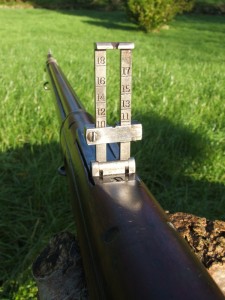
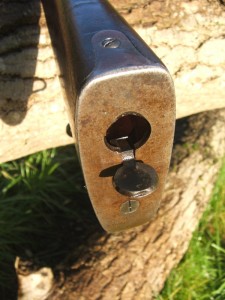
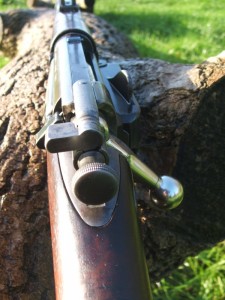
The Krag bolt does have a flag type safety to the rear which acts much as the Mauser type. There is also a magazine cut-off switch to the rear of the action. America’s ability and attention to detail in the production of their military firearms did, in my humble opinion, never reach such heights as in the period of the production of these fine rifles. The attention to detail and the quality of finish was never so high. The Krag’s biggest shortcoming was not its build or design but the lack of knock down power from the cartridge. The rifle itself was a beautiful piece of engineering, arguably the best America produced. It is for this reason that the surviving examples tend to be of an extremely high standard, even now – 121 years after this model was put into service.
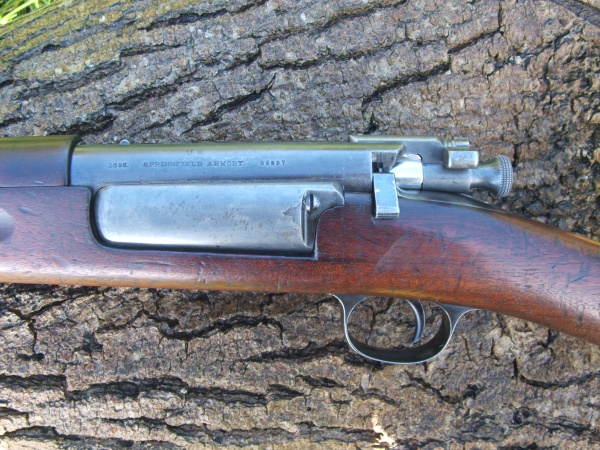
The wood to metal fit on all parts of the rifle is excellent. The timber chosen was once again Americas old favorite, American Black Walnut. It tends to hold detail like the finger groves very well, does not suffer from breakout and finishes extremely nicely. This Krag has all the marks, dings, scratches, dents and bruises associated with a rifle that has seen active military service. Behind the trigger guard is the script “P” within a circled which was the final Proof mark. Also a clear “36” – possibly a rack number. Perhaps quite strange is the fact that there is no trace of the inspectors cartouche that usually appears on the LHS of the wrist. The rest of the stock fittings are as issued with a mid-band, forward sling swivel under. A nose cap incorporating the bayonet lug and stacking hook. The lower sling swivel at the toe of the stock and a flat steel butt-plate which turns in at the toe with a trap for the cleaning accessories. The rear sights are the ramp and ladder type graduated from 300 to 600 yards on the side of the ramp, then from 700 to 1800 yards on the ladder. The aim is through an open U-shaped notch.
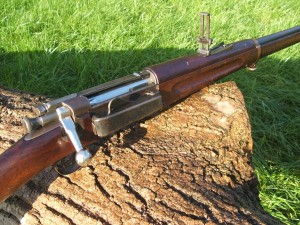
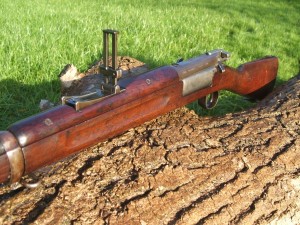
The action seems as smooth as the day it was first used the bore has a slight pitting and frosting but the rifling is deep and uninterrupted. It is curious that records indicate that most 1895 receivers were used on carbines, yet here we have, what is evidently a long gun, with no signs of re-barreling or bubbering; a quandary? Perhaps a rarity. Which ever way it is looked at it is still a fine, classic military rifle, which is ready to step up to the firing point once again. (with fresh UK proofs.)
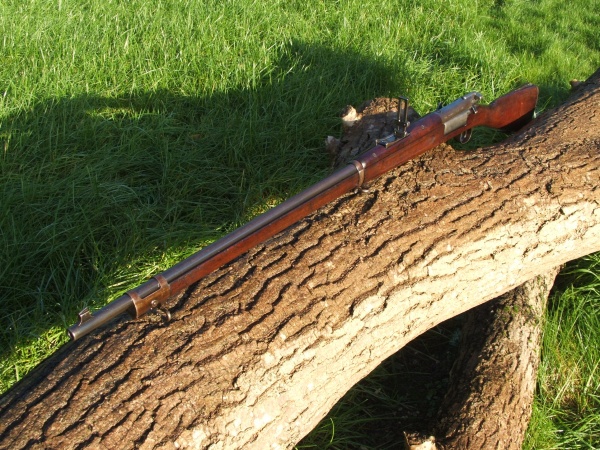
Stock No f 520
£ 1250. (SOLD)
Comments Off on A rare U.S. Model 1895 Krag Rifle……………………(f 520) SOLD